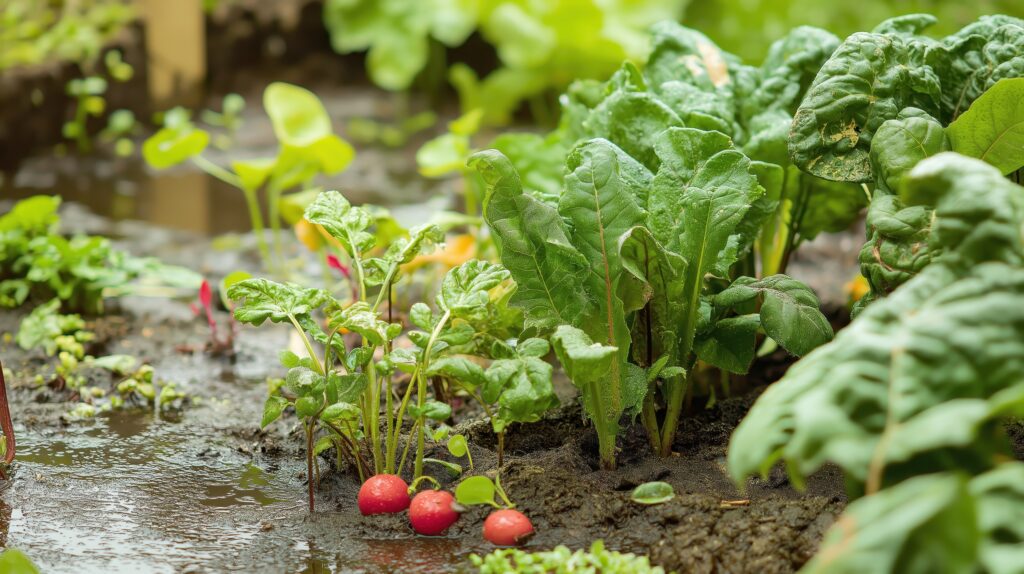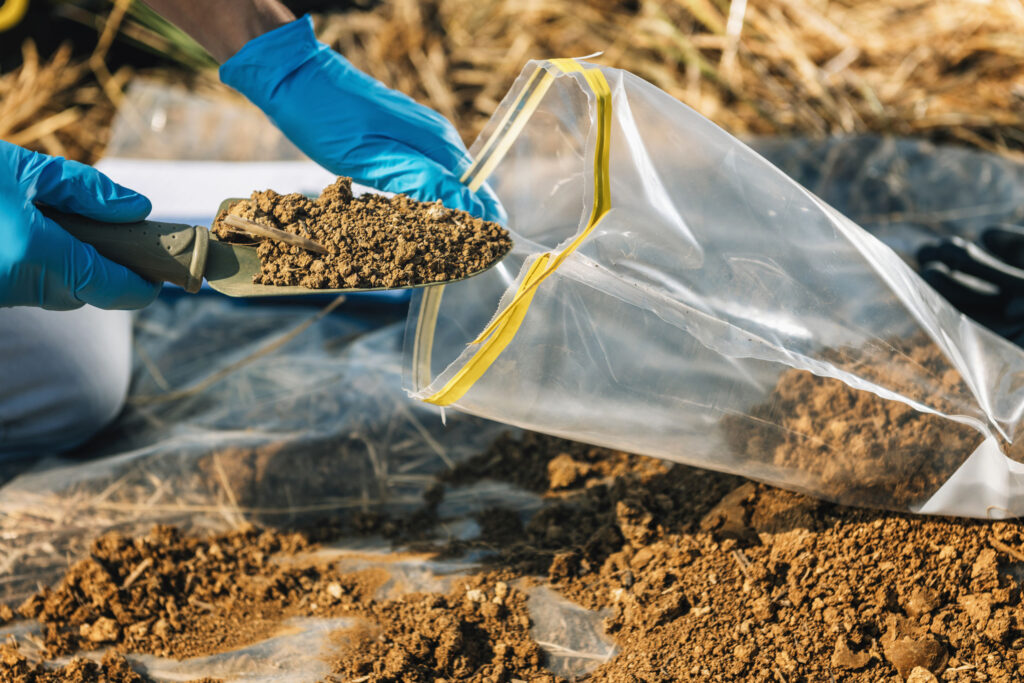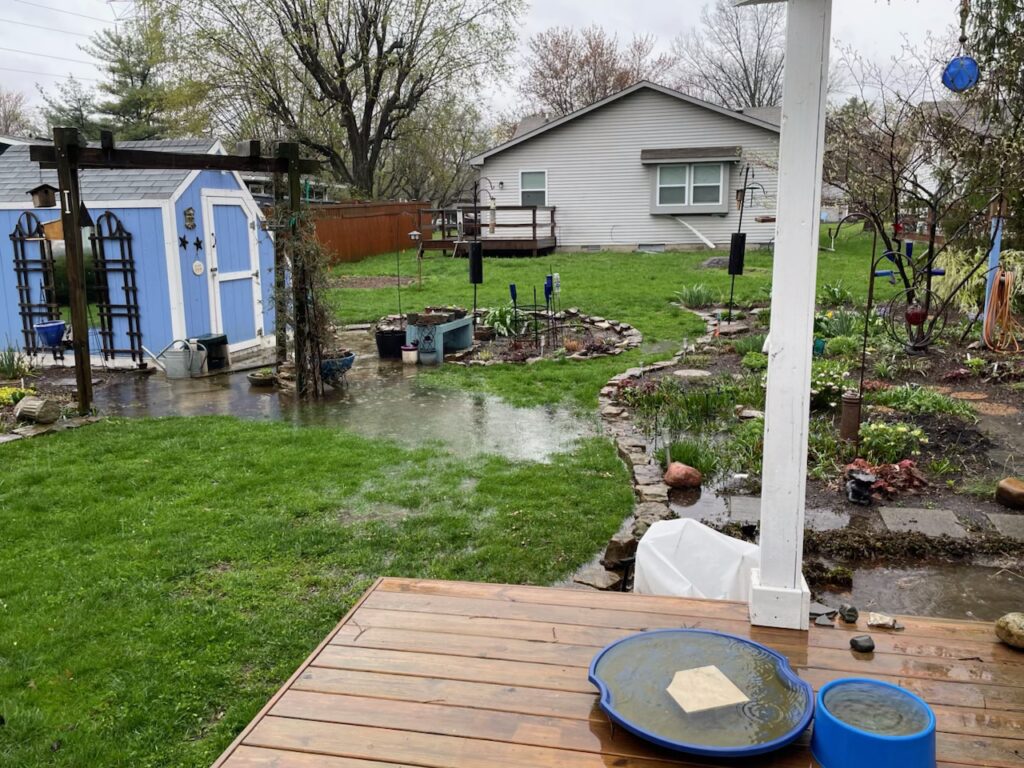
With what seems like a week of record rains and flooding, some of our landscapes may be drenched.
You might think, “good, no watering for a while.” Or “oh no, I hope the plants don’t drown.” Even worse, you’re wondering if the flood water is contaminated.
I wrote about flooded garden in April 2013 and thought I’d update that column for rain and flood threats in Spring 2025.
Edible plants garden flooded
Contaminated flood water is a problem for edible plants. Fortunately, for most of us, we haven’t planted most of our warm season crops like tomatoes, peppers, beans and squash. Seedlings were likely washed away and can be replanted.
Edible plants already in the ground that’s flooded may have to be discarded. We don’t really know what could be in the flood water that hits broccoli, spinach, cauliflower, cabbage, Brussels sprouts, peas and other cool-season crops. Aside of pesticides, there could be animal manure, human waste, oils or other contaminates. It’s difficult to wash contaminates from produce that’s been flooded. lettuces, broccoli heads and other plants.

When to replant garden after flood
You may be able to replant once the water has disappeared and the top 3 inches of soil has dried. Some sources say to wait 60 to 90 days. You might want to have the soil tested to make sure there’s no chemical or other contaminant residue. Clean tools and equipment as you move from flooded areas to areas not flooded.
If you are worried about soil contamination but need to get stuff planted, consider containers or creating a raised bed.

Ornamental plants garden flooded
Food crops aren’t the only plants threatened by floods. Perennials, shrubs and trees may experience soil erosion or upheaval from the ground by flood waters, or they may drown.
How much damage trees, shrubs and perennials sustain depend on how long they were under water. Water saturates the soil, displacing oxygen, a critical element for root and plant survival. Worms and beneficial microorganisms also need oxygen to survive.
Signs of flood-damaged plants
Dead or compromised roots will be revealed above ground with tip or branch die back, yellow, limp or droopy leaves and stunted growth on trees and shrubs. Top growth on perennials will be yellow or dead, but new growth may develop from the base or crown of the plant. Some perennials likely drowned and will need to be replaced.
Besides drowning plants, the floods may have eroded the soil from tree and shrub roots, in garden beds and lawns. Replace soil as needed.
Replenishing the garden soil and plants
Once the water drains away, most of us will be anxious to fix things. As difficult as it may be, wait until the soil dries out. Working with soil that is too wet destroys its texture, damaging it even more.
Finally, to get the microorganism active again, add compost, rotted cow manure, chopped leaves or other organic matter to the soil surface, or work it in the soil when planting or sowing seeds.